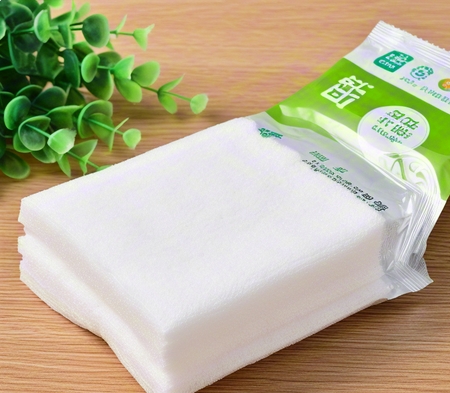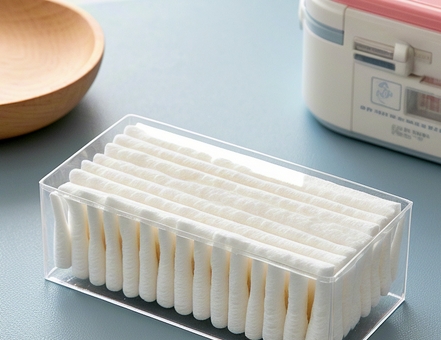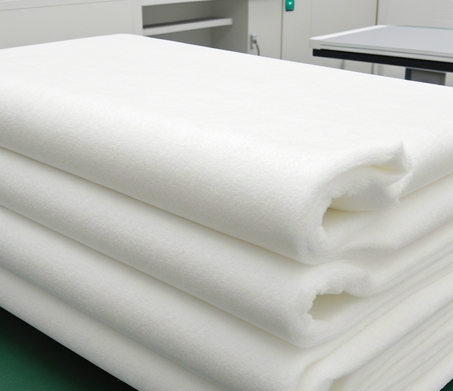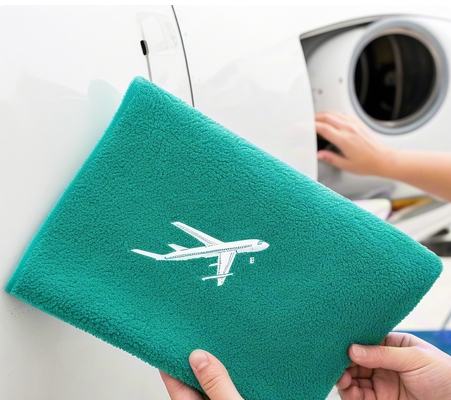Language

Decryption of ultra-clean dust-free cloth material technology: Innovative solutions in the field of micro-pollution prevention and control In precision manufacturing scenarios such as semiconductor wafer processing and biopharmaceutical clean rooms, ultra-clean dust-free cloth is the core component of precision cleaning, and its material engineering innovation is continuing to break through the technical boundaries of micro-pollution prevention and control. According to the 2023 annual report of the International Cleaning Association, advanced dust-free cloth materials have helped increase the global semiconductor yield rate by 0.8%-1.2%. Although the core formula is patented, by analyzing the technical parameters of mainstream products, the evolution direction of contemporary cleaning consumables can be clearly outlined.
High-density polyester fiber: The engineering model of micron-level clean barrier uses a biaxial braiding process for polyester dust-free cloth. Its 5μm-level fiber diameter and a three-dimensional honeycomb structure of 0.05mm²/mm³ creates a new standard for precision equipment maintenance. Taking the cleaning of the objective lens of the lithography machine as an example, this material achieves 0.03μm-level surface residue control under the contact pressure of 2N/cm², while stabilizing the friction coefficient in the 0.15μ range, perfectly protecting the optical coating layer worth millions of US dollars.
The performance advantages of this material are based on triple engineering: - Particle management: Passed ISO 14644-1 Class 4 certification, the release of particles in a single wipe is controlled at 0.08mg/m³ - Fluid dynamics: Innovative groove structure makes the absorption rate reach 220ml/m²·s, 40% higher than traditional materials - Durability verification: Under the ASTM D4966 standard, the cleaning efficiency remains 92% after 500 cycle tests
Nanocomposite fiber: The molecular-grade pollutant capture system consists of 70% modified polyester and 30% functional nylon. Its 0.1μm-grade monofilament diameter forms a three-dimensional cleaning network of 2.2 million fibers per square centimeter. This microstructure is like a precision filter, and the 0.3μm particle clearance rate exceeds the 99.97% threshold during the wafer surface treatment process, while maintaining a tear resistance of 3.2N/mm².
In the field of OLED panel manufacturing, this material improves process stability through three innovative mechanisms: 1. The microfiber topology makes the effective contact area reach 18 times the conventional material 2. Electret treatment technology increases the electrostatic adsorption intensity to 1.5kV/mm3. The graded pore design achieves a directional flow guide speed of 0.85ml/s
Hot melt three-dimensional non-woven fabric: The engineering optimization solution for economical cleaning uses polypropylene material manufactured by meltblown process, and randomly arranges three-dimensional fibers with a thickness of 0.15mm to form a multi-level cleaning structure similar to a sponge. This solution shows unique advantages in photovoltaic panel cleaning, with its comprehensive cost of RMB 0.3 per piece reduced by 35% compared with the traditional solution, while maintaining an initial cleaning efficiency of more than 85%.
It is particularly worth noting that modern dust-free cloth materials have developed a functional layered structure: the 0.1mm area of the surface layer is responsible for coarse filtration, the 0.25mm layer in the middle realizes fine adsorption, and the 0.05mm reinforcement layer in the bottom layer ensures mechanical stability.
In the field of industrial clean technology, new non-woven materials are triggering revolutionary changes. After verification by authoritative organizations, this cleaning material manufactured using meltblown process has achieved 40% cost optimization compared to traditional woven fabrics, and the daily consumption of a single production line in the photovoltaic module packaging process can reach 3,200 pieces. Its breakthrough advantages are particularly significant in the field of food-grade packaging. It has passed the chemical bonding process certified by FDA 21 CFR 177.2260, so that the materials have >98% organic solvent tolerance, perfectly adapted to the GMP cleanliness required for the production of medical consumables.
Materials science breakthroughs are driving the continuous iteration of ultra-clean dust-free cloth performance. Taking the anti-static treatment technology applied in the aerospace field as an example, its surface resistance can be stably controlled in the range of 10^6-10^9Ω, effectively avoiding the risk of electrostatic damage in precision instrument maintenance. According to the "Industrial Cleaning Materials White Paper (2023)", the market size of my country's dust-free cloth has exceeded 4.96 billion yuan, of which the penetration rate of ultra-clean-grade products in the semiconductor manufacturing field has reached 37.2%, confirming the decisive role of material innovation in μ-grade clean control.
[Polymer nonwoven fabrics: a new benchmark for industrial precision cleaning] A three-dimensional mesh fiber structure built on polypropylene meltblown technology, industrial-grade nonwoven fabrics exhibit a particle retention capacity of 0.3μm (certified by ISO 14644-1 Class 5). Verification data from a world-leading SMT equipment manufacturer shows that after using 400g/m² high-weight nonwoven fabric, its patch machine dust removal efficiency jumped from 92.4% to 98.7%, and annual consumables expenditure decreased by 31.5%. This microstructure similar to "molecular-level mosquito net" can intercept 99.2% of solder paste residual particles in the PCB board pretreatment process.
[Combed cotton material: the smart choice of the guardian of cultural heritage] The 6A-level combed cotton dust-free cloth introduced by the Cultural Relics Protection Team of the Palace Museum, its 5μm microfiber structure is like a "nano-level protective glove", achieving zero scratch recording in bronze dust removal operations. The balanced moisture rejuvenation rate of this material is 8.2g/g. It can accurately control the wipe humidity (±3%RH) in the repair scenarios of calligraphy and painting, successfully avoiding the risk of pigment staining caused by traditional chemical fiber materials. After three years of tracking and monitoring, the breeding rate of surface microorganisms on cultural relics using this technology has dropped by 72.8%.
It is worth noting that bio-based degradable non-woven fabrics have entered the mass production stage. The environmentally friendly dust-free cloth made of polylactic acid (PLA) material can have a degradation rate of more than 95% within 180 days under compost conditions, providing a green cleaning solution for the electronics manufacturing industry. While maintaining the same cleaning performance, this material has a 62% reduction in carbon footprint compared to traditional products, marking the official entry of industrial cleaning technology into a new era of sustainable development.
In the field of precision instrument cleaning, breakthroughs in materials science are promoting the revolutionary upgrade of dust-free cloth performance. The cotton ultra-clean dust-free cloth certified by OEKO-TEX 100 has a lattice arrangement density of 40% higher than that of conventional products. In the maintenance scenario of Hasselblad camera CMOS sensor, it was detected by atomic force microscopy that the fiber residue was stable at 0. Below 8mg/m², this is equivalent to 1/200 of the dust on the surface of ordinary A4 paper.
The durability breakthrough in medical sterilization scenarios originates from the special molecular architecture of 66 nylon filaments. After this medical grade dust-free cloth is sterilized by ethylene oxide, the three-dimensional crosslinking network formed by its amide groups can maintain the tensile strength retention rate above 92%. The actual data from the Disinfection and Supply Center of Peking union Medical College Hospital shows that in the accelerated aging experiment that simulates 12 daily high-pressure steam sterilization, the zeta potential on the surface of the material has always been stable in the -35mV range. This physical characteristic similar to the electrostatic adsorption barrier makes its bacterial barrier efficiency reach 99.94%, far exceeding the average level of traditional materials.
In the field of plant-based materials, cold-rolled flax fiber is becoming a new benchmark for green medical care. The 0.03CFU/cm² microbial load standard required by the maintenance procedures of Da Vinci surgical robots is achieved through the natural antibacterial components of linolenic acid, and its 72% Gram-positive bacteria inhibition rate is comparable to that of medical-grade antibiotic coatings. It is worth noting that during the 83-day biodegradation cycle, this flax-based ultra-clean dust-free cloth has a typical exponential decay characteristic, and its 92% degradation acceleration effect comes from the special enzymatic pathway of lignin in the fiber.
The implementation of the international standard ASTM F51-20 has refined the dust-free cloth selection standard into nine major technical parameter systems. In the surface treatment procedures of medical devices, the material antistatic index needs to reach the range of 10^6-10^9Ω, and the composite weaving technology of plant fibers and synthetic materials has now achieved an industry breakthrough with friction voltage values below 50V. This technological evolution has enabled dust-free cloth to upgrade from auxiliary consumables to key control elements in precision manufacturing processes.
Tags:
RELATED RESOURCES

Analysis of the core technology of dust-free pre-wipes: ISO certification + examples of cleaning per
Analysis of core technology of dust-free pre-wet wipes and cross-domain application practiceIn the high-end ma......
More

How to Choose Compliant Swabs?TOC Testing + Sterilization Standards to Improve Clean Sampling Pass R
In the field of pharmaceutical and biotechnology, the cleanliness control of equipment and production environm......
More

Class 100 dustless cloth technical specifications: ISO standards and ultrasonic edge sealing process
Technical specifications and in-depth interpretation of manufacturing process of a hundred-level dust-free clo......
More

How Aircraft Wipes Achieve Zero-Contamination Aircraft Engine Cleaning
Wipe star aviation-grade cleaning consumables are manufactured using innovative hydros pinning process, and th......
More
Related Products
Room 101, Building 1, Angeer Factory, No.4, Hetian Road, Shatian Community, Kengzi Street, Pingshan District, Shenzhen, Guangdong, P.R. China 518122
info@wipestar.com
+86-755-89616775
+86-755-89616773
Related Products
RELATED RESOURCES

Analysis of the core technology of dust-free pre-wipes: ISO certification + examples of cleaning per
Analysis of core technology of dust-free pre-wet wipes and cross-domain application practiceIn the high-end ma.........
More

How to Choose Compliant Swabs?TOC Testing + Sterilization Standards to Improve Clean Sampling Pass R
In the field of pharmaceutical and biotechnology, the cleanliness control of equipment and production environm.........
More
WIPESTAR
微信官方公众号